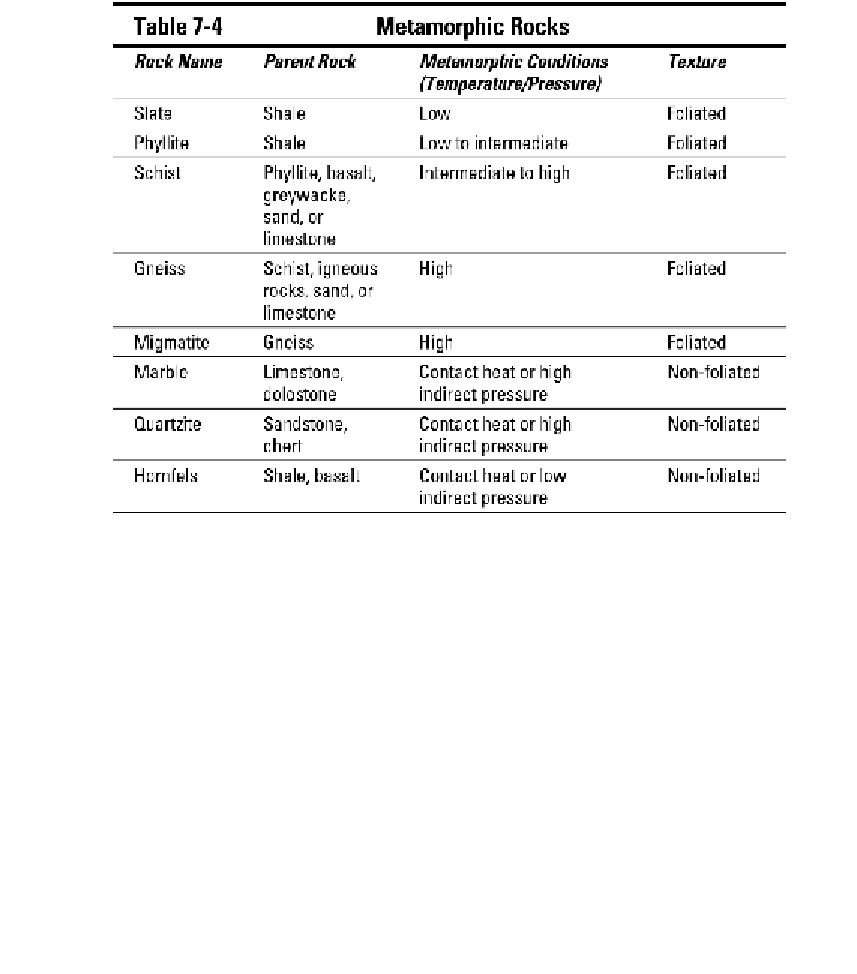Geology Reference
In-Depth Information
Table 7-4 summarizes the classification of metamorphic rocks, including the parent rock,
conditions of metamorphism, and texture (or foliation).
Transforming sedimentary rocks
When the sedimentary rock shale, composed of tiny clay particles, is metamorphosed, it
first transforms into
slate.
Slate breaks along flat, smooth layers of foliation (which is
why slate is used for chalkboards). Under increasing temperature, slate transforms to
phyllite,
which has foliated layers of shiny microscopic mica minerals. When the pres-
sure and temperature are high enough to produce foliated minerals large enough to see
without a microscope, the rock is called
schist
(pronounced
shist
).
When temperatures reach about 1,200 degrees Fahrenheit, the minerals stop flattening
into foliated layers. Instead they try to escape the stress of all that pressure! Certain
minerals handle the stress better than others, so the minerals begin to move from high-
stress areas to lower-stress areas. The result is
gneiss
(pronounced
nice
): a rock with al-
ternating bands of light (felsic) and dark (mafic) minerals. The separation of light and
dark minerals is called
metamorphic differentiation.
This process can create a gneiss
from any metamorphic rock, not just shale.


